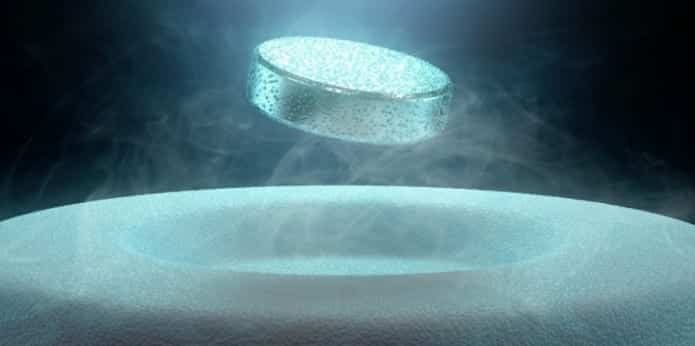Table Of Contents
A new temperature record has been set by Hydrogen Sulphide which becomes superconductive under very high pressure and -70 degrees Celsius.
For the very first time, Hydrogen Sulphide, the compound which gives a stinking odor to rotten eggs and farts is in spotlight for its amazing contribution to physics!
A team of researchers in Germany confirmed that the ‘Stinky Hydrogen Sulphide’ can become superconductive under high pressure and can conduct electricity without resistance at a record breaking -70 degrees Celsius.
Superconductors of today work at a temperature of -110 C and hence this new research where a substance shows the superconductive property at -70 C is definitely a moment of joy to the entire research community as it will bring about a revolution in the industry which uses superconductive technology.
Thus we can say that stinky hydrogen sulphide has truly smashed the superconductor temperature record.
Discovery of Hydrogen Sulphide as a superconductor:
A team of researchers at the Max Planck Institute for Chemistry in Mainz and the Johannes Gutenberg University Mainz together discovered that hydrogen sulphide becomes superconductive at minus 70 degrees Celsisus under a very high pressure of 1.5 million atmospheres. This pressure is almost similar to half of the pressure of the Earth’s core.
It was in December 2014 when the research team got the hint that hydrogen sulphide has the potential of becoming a superconductor.
Edwin Cartlidge at Nature Magazine: During the study
“Mikhail Eremets and his colleagues at the Max Planck Institute for Chemistry in Mainz, Germany, placed a sample of hydrogen sulphide, about one-hundredth of a millimetre across, between the tips of two diamond anvils and then used electrodes to measure how the material’s electrical resistance changed as they cooled the system towards absolute zero. They found that under a pressure of 1.8 million atmospheres, the resistance dropped suddenly at about 190 K, suggesting that a transition to superconductivity had occurred.”
Until now, none of the materials has shown superconductive properties with zero resistance at such high temperatures!
For a substance to become superconductive it needs to posses two major characteristics which includes ‘zero electrical resistance” and ‘Meissner effect’.
Transition of a substance from its normal state to superconductive state is known as Meissner effect and due to this effect it would cause the magnetic flux to be expelled from its interior. Due to this phenomenon the magnet starts to levitate above a superconductor.
The research team had to use extremely high temperature to achieve this superconductive state in hydrogen sulphide. According to Edwin Cartlidge at Nature Magazine the entire research world is excited as well as interested in the findings of this research “because it was achieved without using exotic materials such as the copper-containing compounds called ‘cuprates’, which until now have held the record for the highest superconducting temperature –140 °C at ambient pressure and –109 °C at high pressure”.
“Electrons traveling through a metal constantly ricochet off ions, losing energy with each bounce. However, in the process they slightly shift the position of positive ions in the metal, generating small clouds of positive charge. These positive clouds can pull electrons together, and result in the formation of Cooper pairs, which are much less likely to bump into metal ions and lose energy. Because of this, the electron pairs conduct a charge far more efficiently than single electrons.”
While speaking to New Scientist, Mikhail Eremets one of the member of the German team, said that he is awaiting for some research team to not only confirm their new record but beat it. He also explained that the materials which can produce tougher Cooper pairs are available and the research teams could try to get superconductivity at room temperature which is the need of the hour. He believes: “Theoretically, they are not forbidden.”
Revolutionize the industry which relies on the principles of superconductivity :
Physicists are persistently working on developing a superconductor which could work at room temperature and if this happens it could change the concept of generating and transmitting energy.
The most important factor to achieve superconductivity is the requirement of super cooling. If physicists are able to achieve superconductivity at room temperature, without cooling, then this would result in a scenario wherein all our electronic devices would become ultra efficient. In addition, losing zero energy to resistance without the need for industrial cooling would indicate that it would succeed in giving a massive boost to current uses of superconductivity in the industries such as wind turbines, electrical motors including laptop chargers which will utilize relatively less electricity for its working.
So, next time you happen to smell the disgusting smell of hydrogen sulphide, you will surely remember how amazing this compound becomes under high pressure and low temperature!

